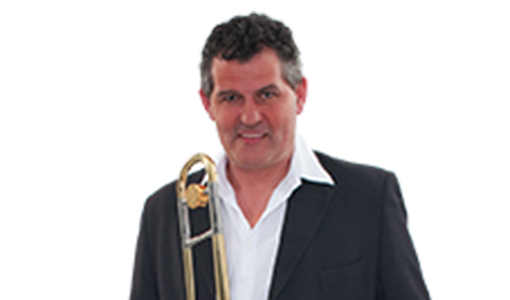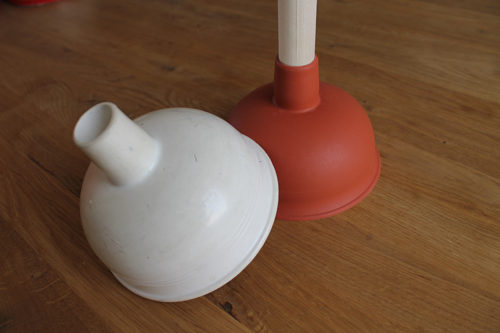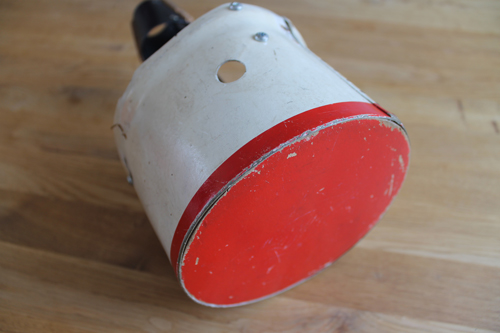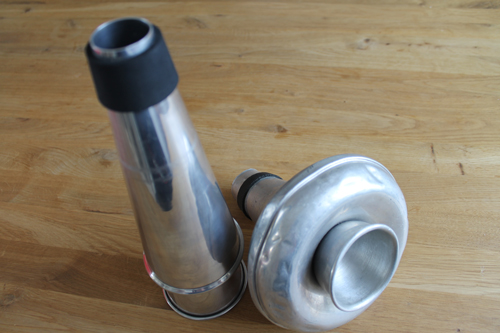Preface
One of the most pleasant compliments a brass player likes to receive is: “You have a beautiful sound.”
While a solid playing technique is indispensable, this becomes futile when the tone is experienced as unpleasant. Countless exercises are available for strengthening or refining your sound. Despite all that, there are good musical reasons for tampering with your otherwise ideal sound. Any object that can be stuck into, or held before, your instrument’s bell is called a “mute”. The variety of mutes in use in modern musical genres have the most diverse shapes and are made of all kinds of materials. This workshop covers the most prominent analog “tone tweakers”.
The World-Famous Mute
The Italian “con. Sordino” or English “Mute” indication often refers to the pointed straight mute. But not always. Just specifying a “mute” is somewhat vague. There are indeed straight, WahWah, cup, bucket, practice and plunger mutes (Figure 1, white). Let us begin with the last one The “plunger” name covers an almost infinite number of models. We probably all know that a plunger was never invented for a brass instrument, but rather as a last resort for flushing issues (Figure 1, red).
“Boo-bap-boo-bap”
One of the most famous tunes played with a plunger mute is the opening theme of “Tuxedo Junction” by Erskine Hawkine and William Johnson (1939). The song title is derived from a railroad junction in Alabama. The “boo-bap-boo-bap” motif is played by the trombones and based on removing the mute from the bell. The score indicates the “boo” parts by means of a plus symbol (+) above the relevant notes, and the “bap” instances using an “o”. The plus symbol should be taken to mean “closed” or “covered”. The “o” is short for “open”. A plunger is a mute that is only used with brass instruments.
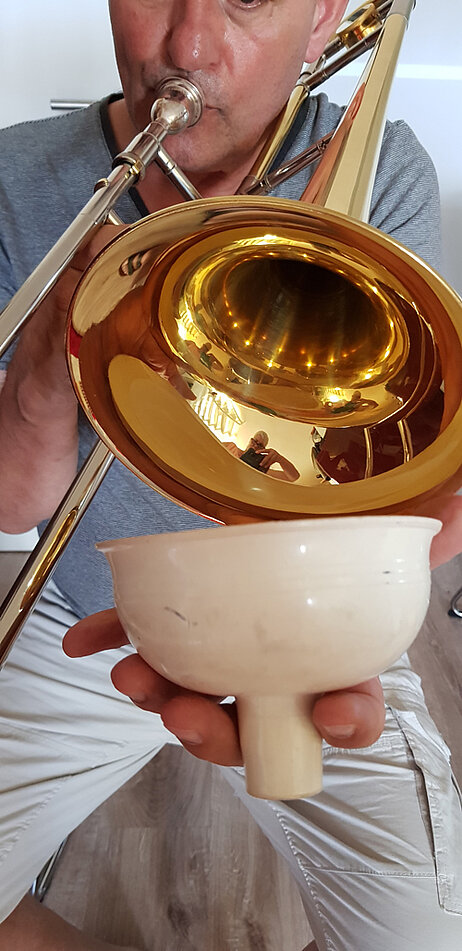
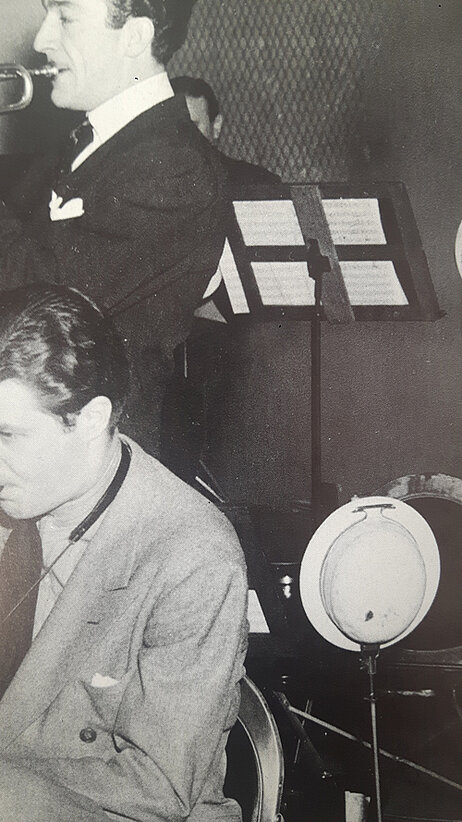
Plunger
Such a plunger mute works a lot better than the palm of your hand, because it manages to cover a larger part of the bell and is therefore more effective. A similar effect can be achieved with the “in-stand” technique. For this, the player holds the bell of their instrument close to the score on the music stand, and then moves it away. The sonic difference with a plunger is almost imperceptible to the audience. Too bad that most trombone players usually hold the bell close to the score, and therefore sound a bit muffled… A workable solution would be to lift the instrument above the music stand, or to direct it to one side.
Playing with a plunger requires placing the funnel in the ball of the thumb and the hand, which makes moving the mute a lot easier (Figure 2). A few decades ago, “hats” were attached to the music stand, allowing musicians to play into it in order to achieve an almost identical effect. A bowler hat was the tool of choice, because it was available in various materials (usually metal). The hat’s name, by the way, is derived from its two inventors—Thomas and William Bowler—and made its first appearance in 1849, in London. Another widespread name for a bowler hat is “Derby mute”. Be it as it may, playing into such a hat was a popular way of muting the sound. It is rumored that some musicians put short texts or even the score of such passages inside the hat to be sure to use this technique. Figure 3 shows Harry James with a white Derby/bowler mute attached to his music stand.
Velvet
The effect of a velvet mute is similar to the plus symbol (covered bell) above a note, or to playing into a bowler hat. Unlike the previous mutes, however, the velvet is installed onto the bell, has a long tube and is covered with velvet on the inside, which produces its velvety sound. While this mute is probably not suitable for heavy metal, it can be a real star for soft-melody passages. See Figure 4
WahWah Mute
The most recognizable theme played with a WahWah mute consists of a mere four notes and is called “Sad Trombone”. Playing with this mute may also involve the plus (covered) and open (o) techniques. You are probably familiar with Miles Davis’s sound and the original tunings he achieves with this dampers. Achieving this particular sound, however, involves pulling out the WahWah section. Playing with a mute usually means that the instrument’s tuning has to be adjusted. Figure 5 shows two different models.
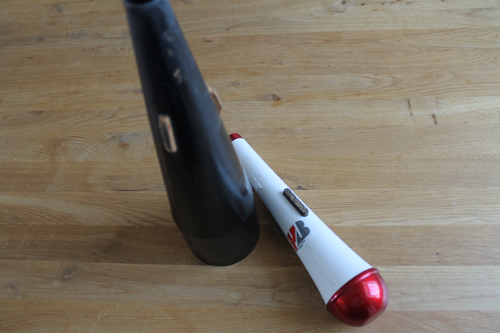
Straight Mute
The straight mute is probably called for whenever the score contains the “con sordino” or “with mute” indication. Figure 6 shows two different models.
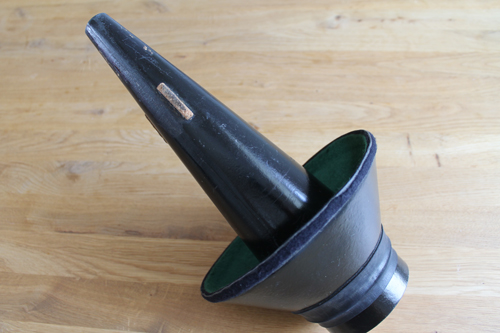
Cup-Mute
The cup mute (Figure 7), though similar to a straight mute, sports a cup-like cover at the front.
Practice Mute
Despite its name, a practice mute is probably not suitable for prolonged practice. Its main purpose is to allow players to warm up in recreation areas. There is also an electronic variant with a microphone and headphones that allows you to practice anytime, anywhere.

